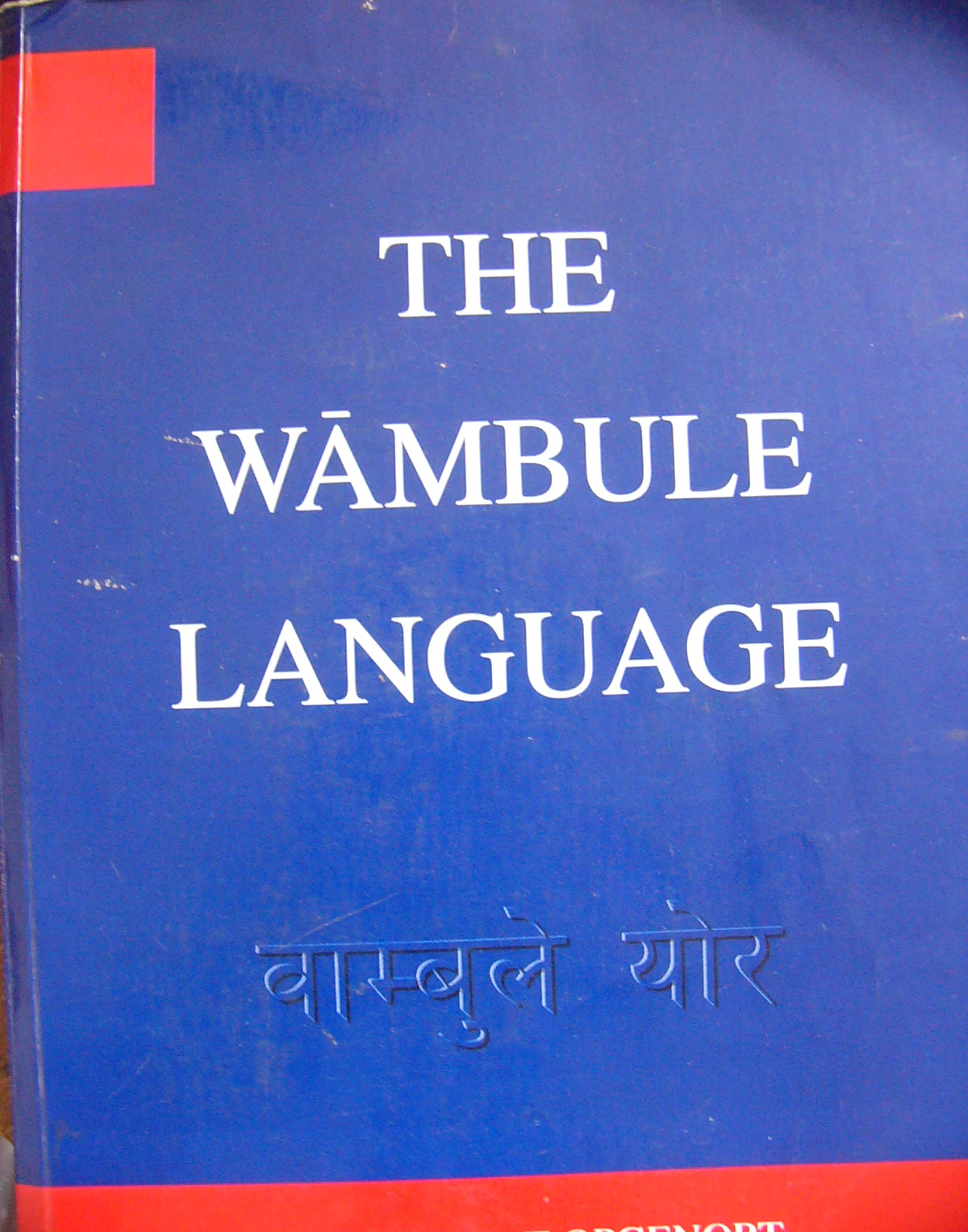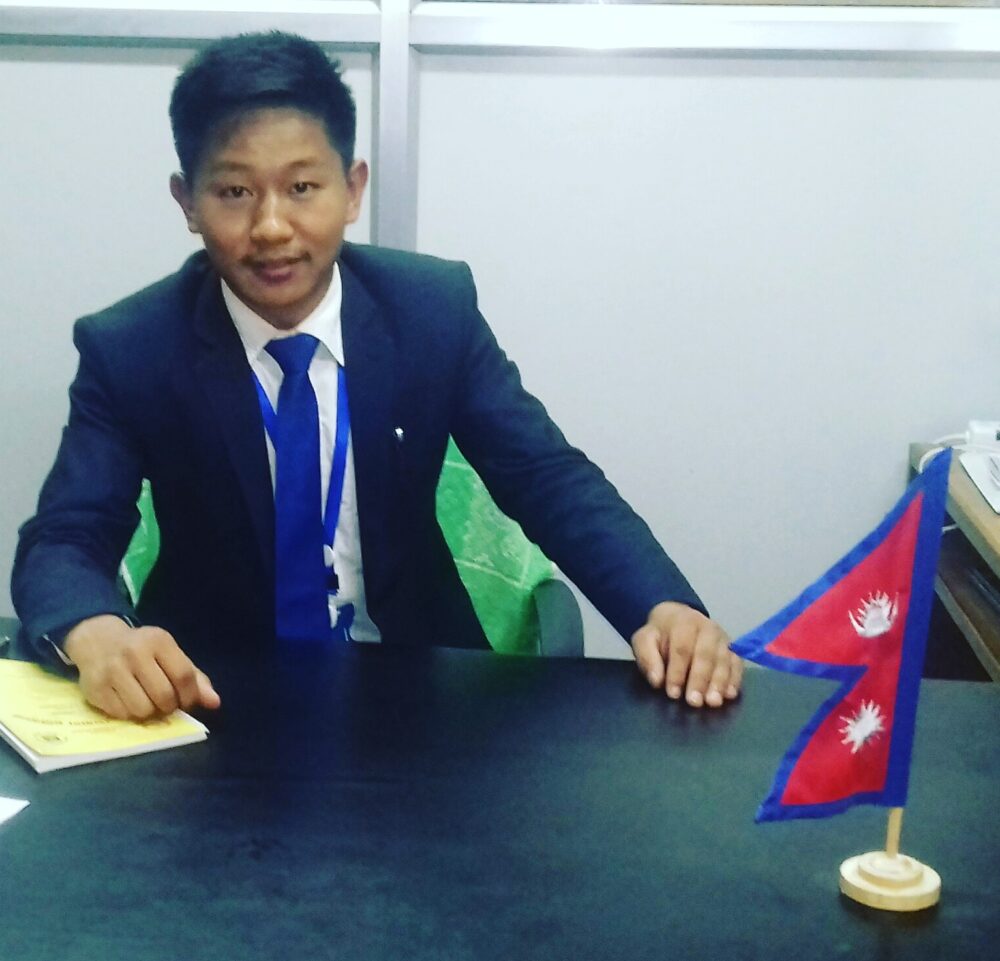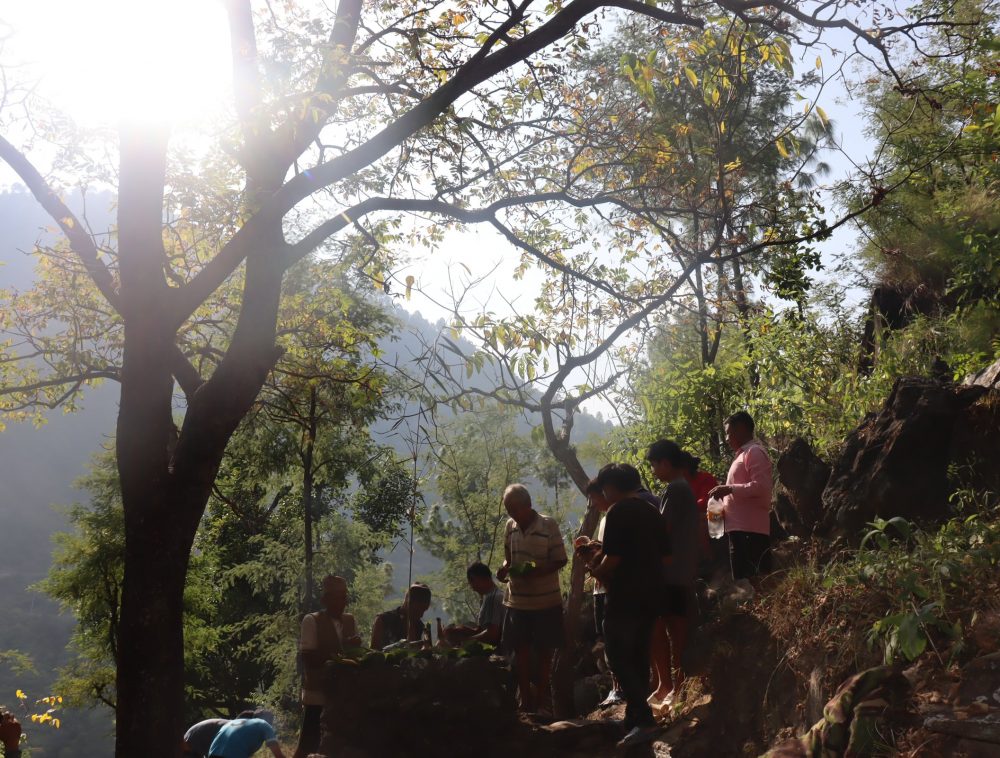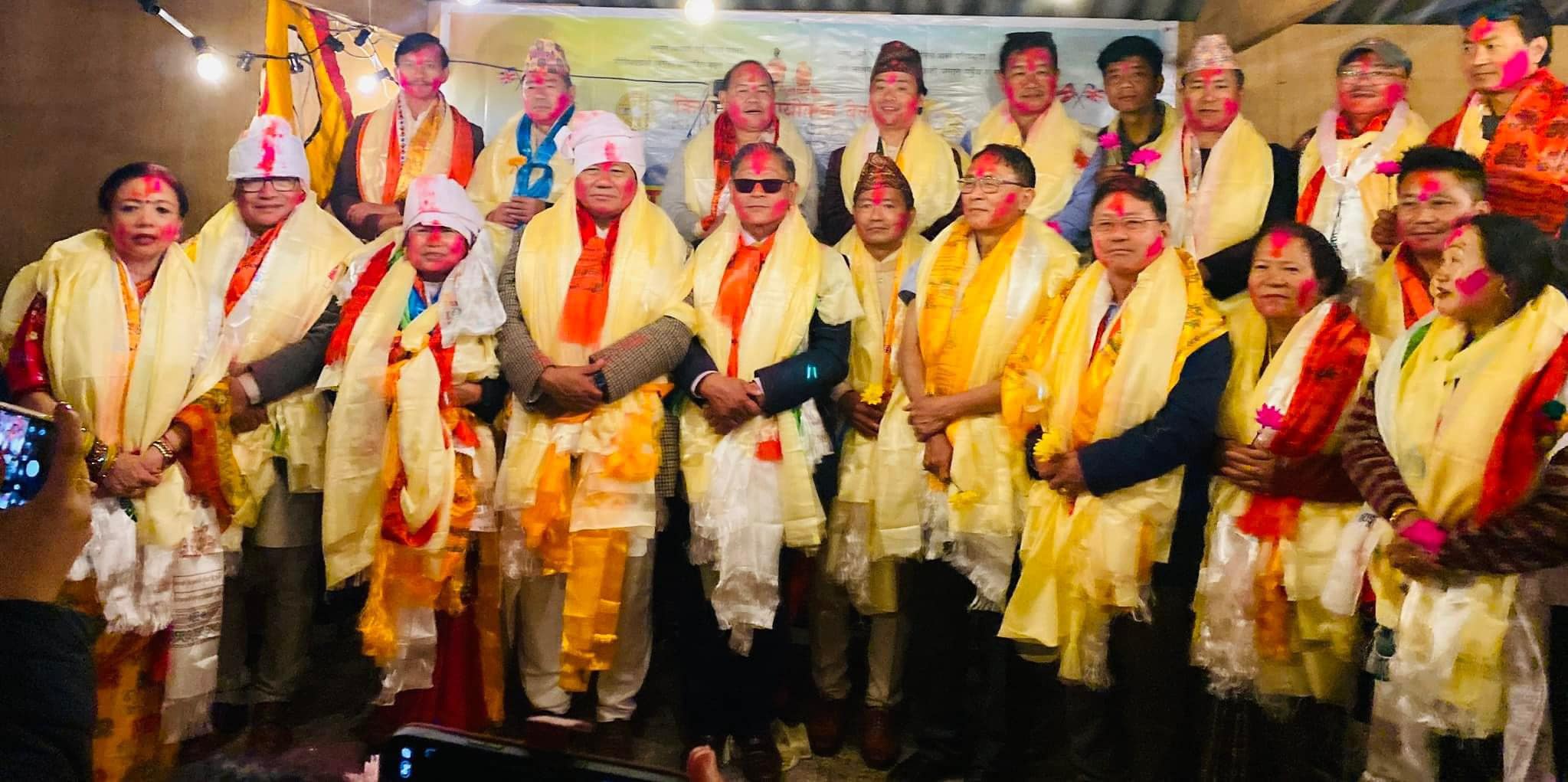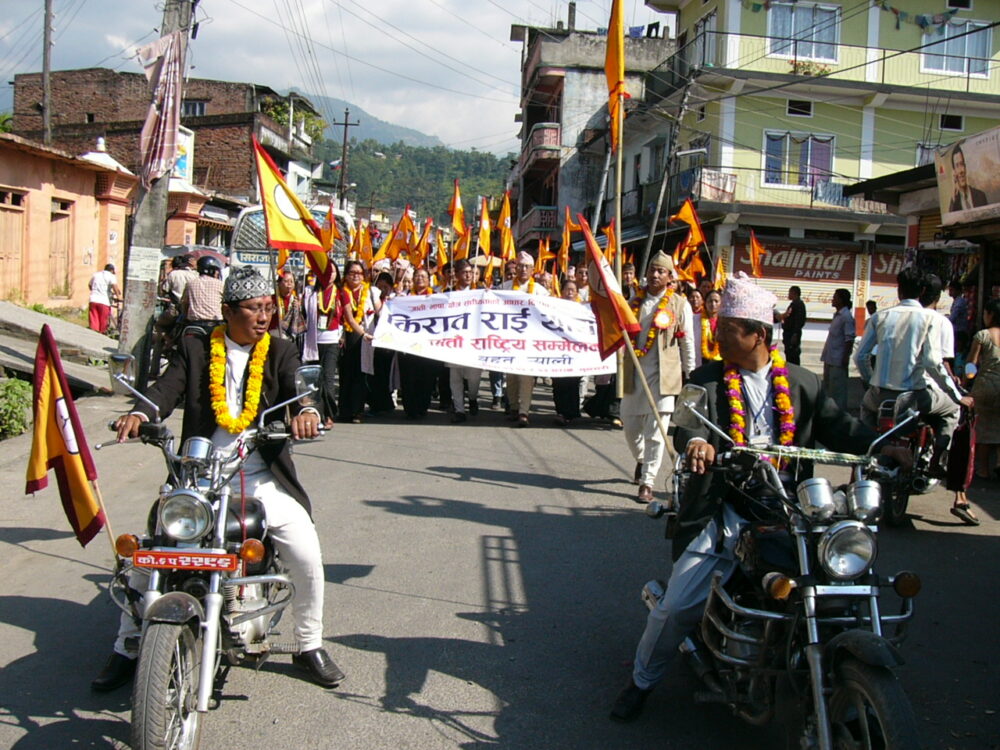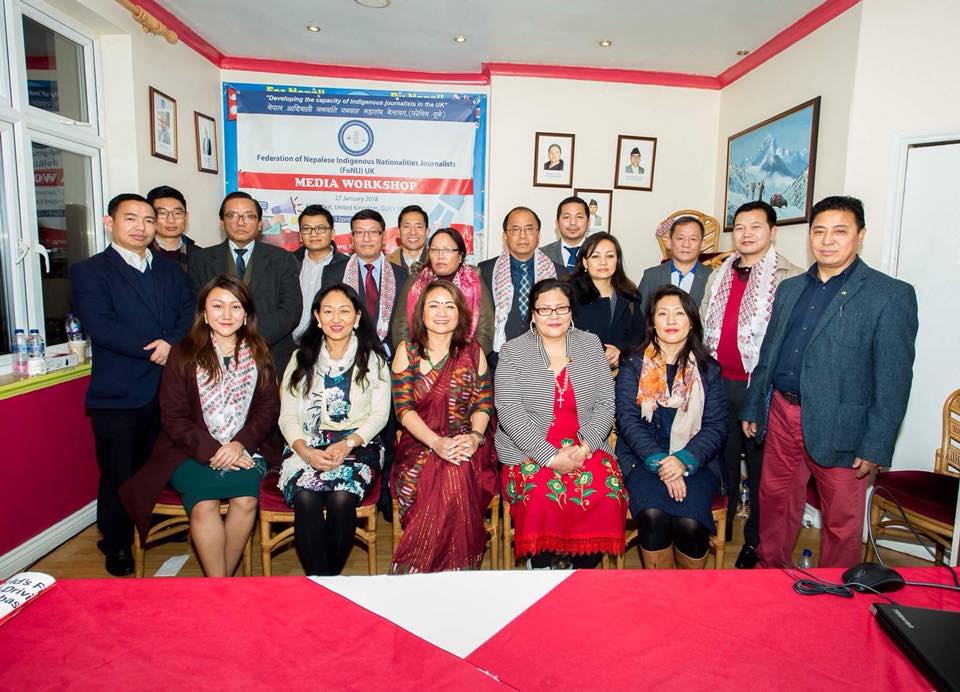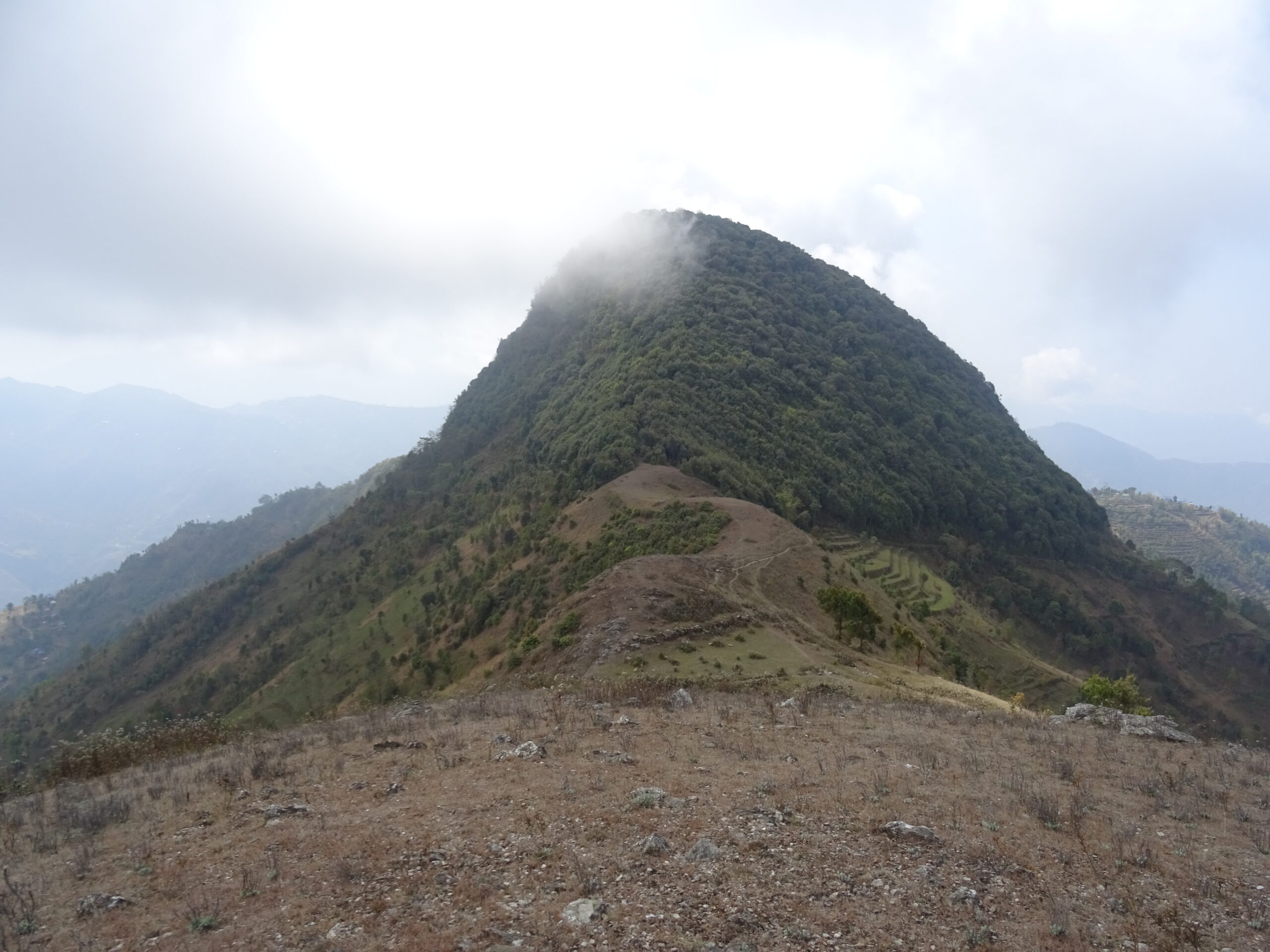The Wambule language and its Sociolinguistic situation[1]
Krishna Prasad Chalise
[1] This paper is based on the sociolinguistic survey carried out by Linguistic Survey of Nepal (LinSuN), Central Department of Linguistics, Tribhuvan University. I would like to remember late Dr. Laxmi Raj Pandit who passed away last month because of COVID 19. He was my co-fieldworker during this survey.
1 Background
Wambule is an ethnic nationality of Nepal belonging to the Rai-Kirati group. They have their own indigenous culture, language and identity. The term Wambule refers to both the ethnicity and their language. In the literature, there are found a number of other terms like Ambule, Caurasia, Chaurasia, Chaurasya, Ombule, Tsaurasya, Umbule, VambucaurasRaduyor, Vambule, etc. (Eppele et al. 2012) used to refer to the people and their language. Traditionally the Wambule people used to be called Chaurasiya which is the adjectival form of Nepali number 84 (tˢʌurasi). It is because the Wambule speaking areas used to belong to the district no 84 in the traditional administrative division of Nepal. But the term didn’t only refer to Wambules but also to Jeros who reside adjacent on the South-West of the Wambule residing areas. Both of the communities are very close to each other linguistically and culturally as well. Hodgson (1857) used the term covering both of the communities and recorded the first wordlist of the language under the term Chaurasiya (van Driem 2001).
In our study, we found that they preferred to call themselves wambule or wɔmbule and they have negative feeling towards the other terms used in the literature. We could not identify whether they have clans or not.
van Driem(2001) has stated that the Wambule residing area is the area around the confluence of the DudhKoshi and SunKoshi which extendsover the South-East of the Okhaldhunga, South-West of the Khotang and North-West of the Udayapur districts. Eppele et al. (2012) states that Wambule language is spoken in southern most Okhaldhunga. Our study reveals that van Driem is more accurate about the Wambule residing areas and Eppele’s finding is incomplete. In our fieldwork, we could find Wambule residing areas in the Sindhuli district too. There are some Wambule settlements in Ratnawati VDC in the North-East of the Sindhuli district.
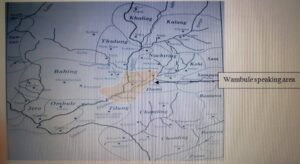
2 The Wambule language
The people call themselves Wambule and their language Wambule Yor or Wambule bhasa or Wambule kura. None of the respondents used other terms to refer to their language. The endonym and the exonym of the language are also the same in most of the cases but some people use Chaurasia as exonym. According to the CBS report of Nepal (2011), there are13470 native speakers of the language.
Wambule is a Western Kiranti language under the Himalayan sub-branch of Western Tibeto-Burman branch of Tibeto-Burman language family. The closely related languages to Wambule are Bahing, Sunwar and Jero (Bradley, 1996). Eppele et al (2012) is based on Bradley (1996) and has same classification. The genetic classification of Wambule has been presented in Figure 2.
| Tibeto-Burman
Western Tibeto-Burman Himalayan Rai-Kiranti Western Sunwar Surel Bahing Wambule Jero |
Figure 2: Genetic classification of Wambule [Source: Bradley (1996)]
The language has a distinct phonetic/phonological identity because of the unique sounds available in it. The implosive sounds like [ɓ], [ɗ ], [ɠ ] which are very rare in the languages. There are likely to be other unique sounds which are to be investigated.
2.1 The language varieties
For the purpose of identification of the different dialects of the Wambule language, we carried out dialect mapping at four survey points: Hilepani, Udayapur, Unbu and Gerudanda, and tried to find out an overall impression of the distribution of the Wambule varieties spoken. Dialect mapping at Hilepani showed that Wambule is spoken in Hilepani, Udayapur, Unbu, Waksa, Richuwa, Jakma, Sokmatar, Thumki, Jhappa and Dikuwa villages in the areas near the confluence of Dudhkoshi and Sunkoshi Rivers. The people identified three varieties of Wambule. The first variety is spoken in Hilepani, Thumki, Jakma and Sokmatar, second variety is rather large and spoken in Udayapur, Richuwa, Jhappa and Dikuwa. Similarly the third variety is spoken in Unbu and Waksa.
Dialect mapping at Udayapur had been beneficial for the identification of the Wambule speaking areas in Sindhuli district. Unlike the dialect mapping at Hilepani, it included Udayapur and Unbu varieties together in a single group and Waksa in a different group as in Figure 3 (2). Dialect mapping at Unbu brought a very different picture of dialect distribution of Wambule. Except Madhavpur, it included Hilepani, Udayapur, Unbu and all the locations on the both sides of Dudhkoshi in a single dialectas in Figure 3 (3). The dialect mapping at Gerudanda brought the same picture of dialect distribution of Wambule as in Unbu but it was different in the point that it separated Toksel and Ketuki into a different separate group as in Figure 3 (4).
Dialect mapping could not bring a clear picture of the distribution of the Wambule varieties except it clearly distinguished the variety spoken in the areas of Sindhuli across the Sunkoshi River from the variety spoken in the areas on the sides of Dudhkoshi. It is because the varieties spoken on the both sides of Dudhkoshi River are very similar to each other and the speakers don’t find a clear cut distinction among the varieties


Figure 3: Dialect mapping at Hilepani (1), Udayapur (2), Unbu (3) and Gerudanda (4)
The wordlists collected from five different survey poits: Hilepani, Udayapur, Unbu, Gopitar, and Gerudanda were compared and the summary of the comparison has been presented in Table 3.
The lexical similarity comparison shows that the form of the language spoken in Gerudanda is slightly more distinct from the forms spoken in other locations and the form of the language spoken in Gopitar is almost equally close to each of the varieties. To generalize, the difference in the lexical similarity is based on the geographical proximity of the locations. If the locations are geographically closer, the forms of the language are closer and vice versa.
Table 3: Lexical similarity comparison
| Hilepani | Udayapur | Unbu | Gopitar | Gerudanda | |
| Hilepani | 100% | ||||
| Udayapur | 80% | 100% | |||
| Unbu | 76% | 83% | 100% | ||
| Gopitar | 83% | 84% | 88% | 100% | |
| Gerudanda | 74% | 79% | 78% | 80% | 100% |
Based on the dialect mapping and the lexical similarity comparison, we have grouped the variations found in the language into groups and sub-groups as presented in Figure 4.
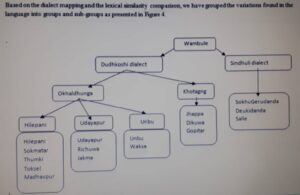
2.2 Patterns of language use
Wambule community is a bi/multilingual community as we could not find monolingual speakers of the language. Wambule and Nepali are the major vehicles of communication in the community and the use of other languages is negligible. Wambule is the first language of the Wambule community and they acquired Nepali as the second language but nowadays there are found a number of youngest generation people whose first language is Nepali and acquired Wambule as the second language or do not speak Wambule at all. This situation is mostly found in the areas which are quite far from the major Wambule residing areas like Gerudanda.
Wambule is the main language of communication in everyday life and is mainly used in the domains related to Wambule community and culture. It shows that Wambule is the major vehicle of communication in majority of the domains of language use but it is going to lose its strength in some other domains of language use. In the domains related to other communities, cultures and inter-community communication, the use of Wambule is limited. In the domains like village meeting and shopping/marketing people use it with their own community members and use Nepali with outsiders. Its use in counting and singing is very low.
The degree of use of Wambule seems to vary according to different locations because language retention is not even in all the Wambule speaking areas. Table 4 presents the use of Wambule in general domains of language use at different survey locations.
Table 4: Use of Wambule in different domains by locations
| Hilepani (n=12) | Udayapur (n=12) | Unbu (n=12) | Gopitar (n=12) | Gerudanda (n=12) | |
| Counting | 0 (0%) | 0 (0%) | 0 (0%) | 0 (0%) | 0 (0%) |
| Singing | 0 (0%) | 1 (8%) | 3 (25%) | 0 (0%) | 0 (0%) |
| Joking | 12 (100%) | 11 (92%) | 12 (100%) | 12 (100%) | 10 (83%) |
| Shopping/ Marketing | 1 (8%) | 0 (0%) | 2 (17%) | 0 (0%) | 0 (0%) |
| Story telling | 4 (33%) | 2 (17%) | 4 (33%) | 1 (8%) | 0 (0%) |
| Discussing/ Debate | 11 (92%) | 10 (83%) | 10 (83%) | 11 (92%) | 9 (75%) |
| Praying | 9 (75%) | 4 (33%) | 6 (50%) | 8 (67%) | 5 (42%) |
| Quarrelling | 10 (83%) | 10 (83%) | 10 (83%) | 11 (92%) | 9 (75%) |
| Abusing | 10 (83%) | 11 (92%) | 10 (83%) | 11 (92%) | 9 (75%) |
| Telling stories to children | 9 (75%) | 9 (75%) | 10 (83%) | 9 (75%) | 4 (33%) |
| Singing at home | 5 (42%) | 6 (50%) | 9 (75%) | 9 (75%) | 5 (42%) |
| Family gatherings | 10 (83%) | 12 (100%) | 12 (100%) | 12 (100%) | 12 (100%) |
| Village meetings | 7 (58%) | 12 (100%) | 11 (92%) | 12 (100%) | 7 (58%) |
The use of Wambule is very prominent in the domains like joking, debate, quarreling, abusing, telling stories to children, family gathering and village meetings. Its use in the domains like counting, singing and story telling is very low. It shows that the language is dominantly used in
2.3 Use of the language in interpersonal communication
The questions were asked to the respondents about the use of languages with their different generation family members like grandparents, parents, spouse and children while talking about education related topics and family or society related topics.Most of the respondents use Wambule with their family members in both educations related and society/family related matters. It indicates that it is a vibrant language used by all generation community people.
The children dominantly use Wambule in almost all of their daily life situations and use Nepali in a limited number of situations like with the outsiders, with the teachers in the school, in the classroom, etc. While playing with their friends within the community all the children use Wambule in all the survey locations except Gerudanda, where, only three-fourth (75%) of the children use Wambule.
The Wambule speaking areas are homogenous settlements of the Wambule people so the children use their mother tongue in the society. They don’t have to use Nepali until they go to the school where the medium of instruction is Nepali and they meet friends from other speech communities. In Gerudanda the speech community is small although it is homogenous. So they have to come in contact with the members of other language communities.
As the Wambule settlements are homogenous, the children use Wambule with their neighbors. In Gerudanda the speech community is small and the other language speaking communities are around their community and the children have to communicate with them. So they have to learn Nepali from their childhood. Nowadays, because of the expansion of transportation facilities and different types of businesses, people speaking other languages are migrating into several traditional Wambule settlements and the number of heterogeneous settlements is increasing day by day. As a result, the Wambule children are bound to become bilingual from their childhood in the future.
In the schools the children are completely bilingual and use both Wambule and Nepali according to the situations. Nepali is the medium of instruction in the schools so the classroom language is automatically Nepali. Generally, the teachers and their friends are Nepali speakers so they have to speak Nepali. Even the Wambule teachers don’t speak Wambule at school.
So Nepali is the main language the children at schools. In the lower classes they use Wambule with their friends for some extent but in the higher classes the use decreases gradually. Most of the teachers in the schools are from other parts of the country and don’t speak Wambule and the students should speak Nepali with them. Similarly, while talking with the Wambule speaking friends mostly they use Wambule. Some times they use Nepali based on the situation and the topic of discourse.
2.4 The language of wider communication and its use
All the respondents identified Nepali as their Language of Wider Communication (LWC). They use Nepali with all the outsiders. There are not monolingual speakers of the Wambule language. The situation was same at all the survey points regardless the gender and age. The use of Nepali was found to have slightly determined by the educational level of the people. The people with higher education use Nepali more often than the people with lower education or the illiterate ones.
Similarly, the people who come in contact with outsiders more often use Nepali more often than the people who seldom come in contact with the other language speakers. Likewise, the males are likely to come in contact with outsiders more often than the females. But the school/college teachers, the officials working in governmental or non-governmental offices always come in contact with outsiders and use Nepali more often in their daily lives. Similarly, the young people use Nepali with their friends speaking other languages.
2.5 Language loyalty
All of the respondents love their language and want to promote it and expand its use in different domains of language use. So different ethnic and social organizations are working very actively for the promotion of this language. Because of the high level language loyalty and the attempts for language promotion, use of the language in the intracommunity activities and the intergenerational language transmission are vibrant. The young people are writing in the language in the different genres of literature to enrich its literature.
Vast majority of the respondents in all the survey points preferred Wambule to make the medium of instruction in the primary level. A limited number of people preferred Nepali and in Hilepani some preferred English too. It shows that people influenced by the modern world prefer the languages of wider communication. But nowadays people have become identity conscious and regard the mother tongue as a symbol of identity. So they prefer mother tongue although they are influenced by the modern world.
3 Summary
The Wambule language is the native language of the Wambule Rai community that belongs to the Rai-Kirati group of people. The confluence of the Dudhkoshi and Sunkoshi rivers extending over the South-East of Okhaldhunga, South-West of Khotang, North-West of Udayapur districts and the part of the Sindhuli district adjacent to that part is the Wambule residing area.
Genetically, it is a Western Kirati language that has close genetic relationship with Jero, Bahing and Sunuwar.
The language variation increases as par the geographical distance, the geographically closer varieties are closer to each other and vice versa. We simply classify them into Okhaldhunga, Kotang and Sindhuli varieties.
There is found strong intergeneration language transmission so the community members belonging to all generations use the language mostly in the family and community level domains of language use. There is found disruption in the intergenerational transmission in some localities that are dislocated from the main residing areas like SakhuGerudanda, Ratnawati VDC in Sindhuli district.
The language of wider communication is Nepali that they acquire as the second language. They use it with the out siders and in the external and official domains.
All of the community members love their language most and the individuals, ethnic and social organizations are working for the promotion of the language and widen the areas of language use. They are also working for the enrichment of the language resources and literature. So almost all of the respondents want to make their language the medium of instruction in the primary level of formal education.
Wambule language community presents a good model of community level language management in multilingual setting. They have compartmentalized the use of language as they use their native language in the home and community domains which are the safest domains for a minority language and use language of wider communication in the outside domains. This is the most successful model of preserving minority languages in a multilingual setting. Creative language activism which has true sense of multilingual language policy that ‘I care my languages’ has also worked for the preservation and promotion of the language.
References
Bradley, David. 1996. “Tibeto-Burman Languages and Classification”. In: Papers in Southeast Asian Linguistics No. 14: Tibeto-Burman Languages of the Himalayas.1-72. Pacific Linguistics.
Epple, John. W., Lewis, M. Paul, Regmi, Dan Raj & Yadava, Yogendra Prasad (2012). Ethnologue: Languages of Neapl. Kathmandu: Linguidtic Survey of Nepal and SIL International.
Hodgson, B. H. 1857. ‘Comparative Vocabulary of the Languages of the Broken Tribes of Nepal’ in Journal of the Asiatic Society of Bengal. XXVII: 393-456.
Population Census Report of Nepal. 2011. Kathmandu: Central Bureau of Statistics, the Government of Nepal.
van Driem, George. (2001). Languages of the Himalayas (Vol. II). Leiden-Boston: Brill.
(Mr. Chalise is a Lecturer of Central Deparment of Linguistic, TU)
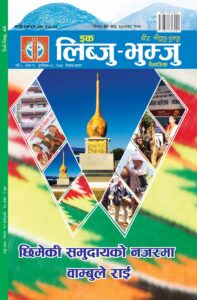 (इक लिब्जु–भुम्जु त्रैमासिक वर्ष ८ अंक १२, पूर्णाङ्क ८५, २०७८ वैशाख–असार (किरात येले संवत् ३८००÷सन् २०२१) मा प्रकाशित आलेख यहाँ प्रस्तुत गरिएको हो । सम्पादक)
(इक लिब्जु–भुम्जु त्रैमासिक वर्ष ८ अंक १२, पूर्णाङ्क ८५, २०७८ वैशाख–असार (किरात येले संवत् ३८००÷सन् २०२१) मा प्रकाशित आलेख यहाँ प्रस्तुत गरिएको हो । सम्पादक)
